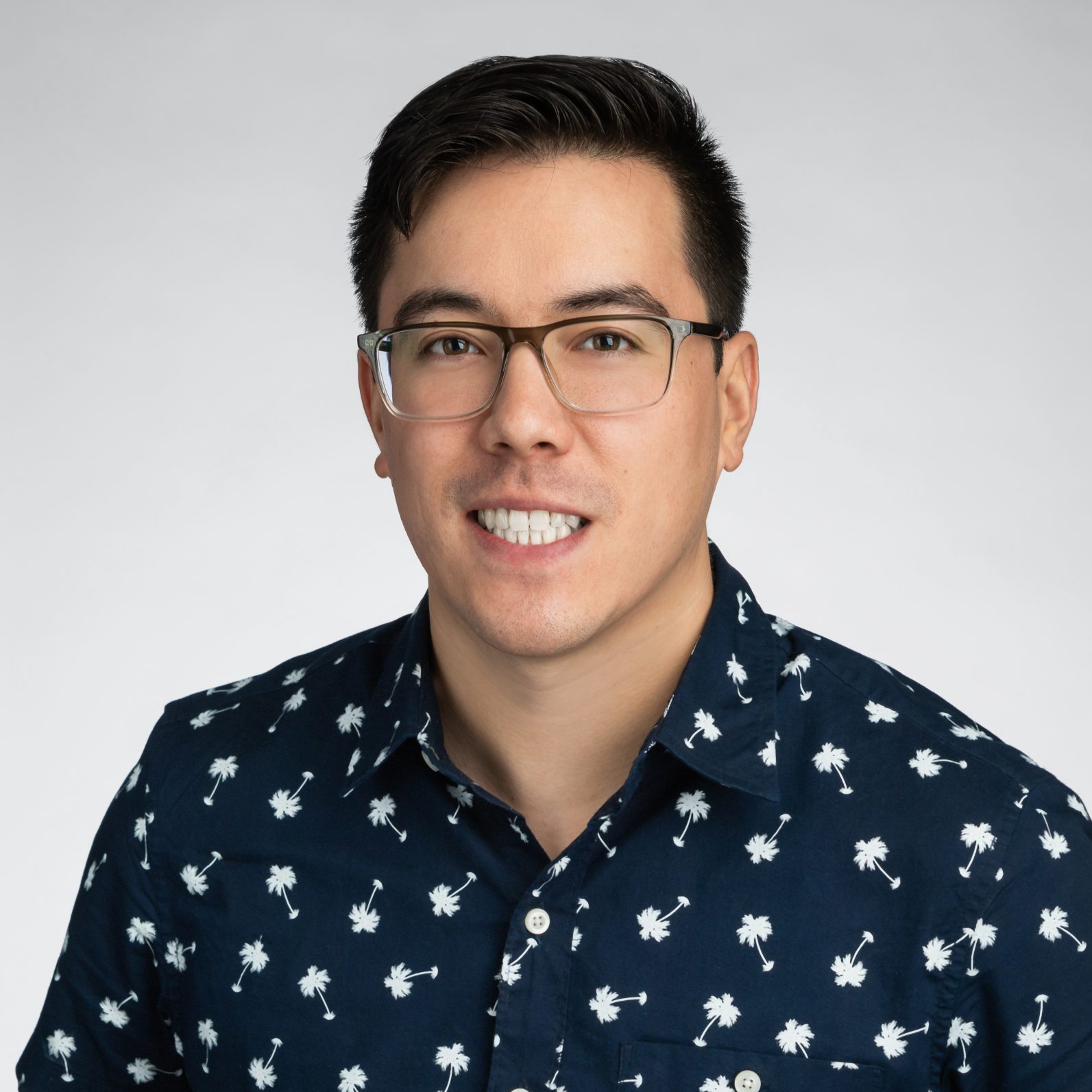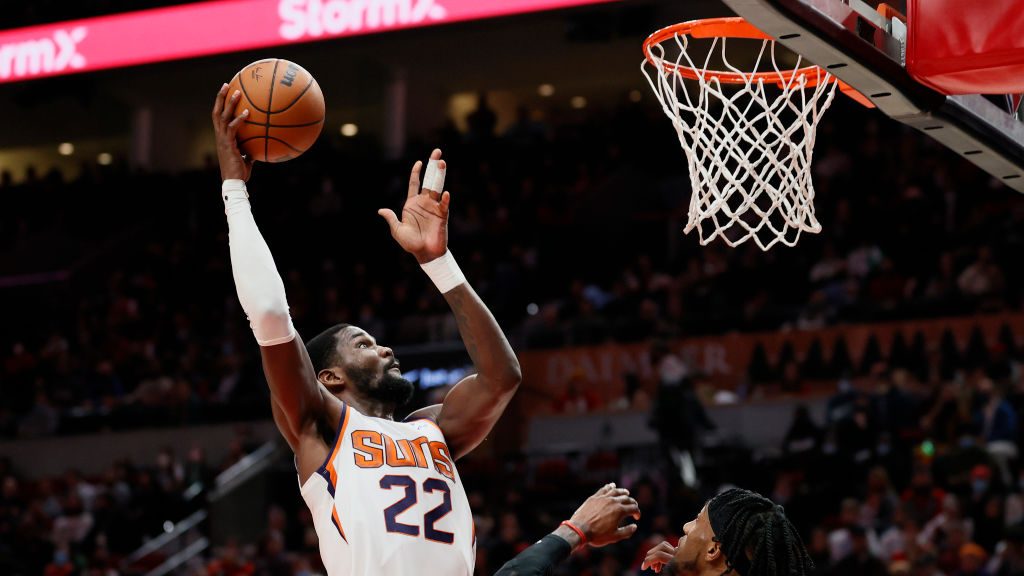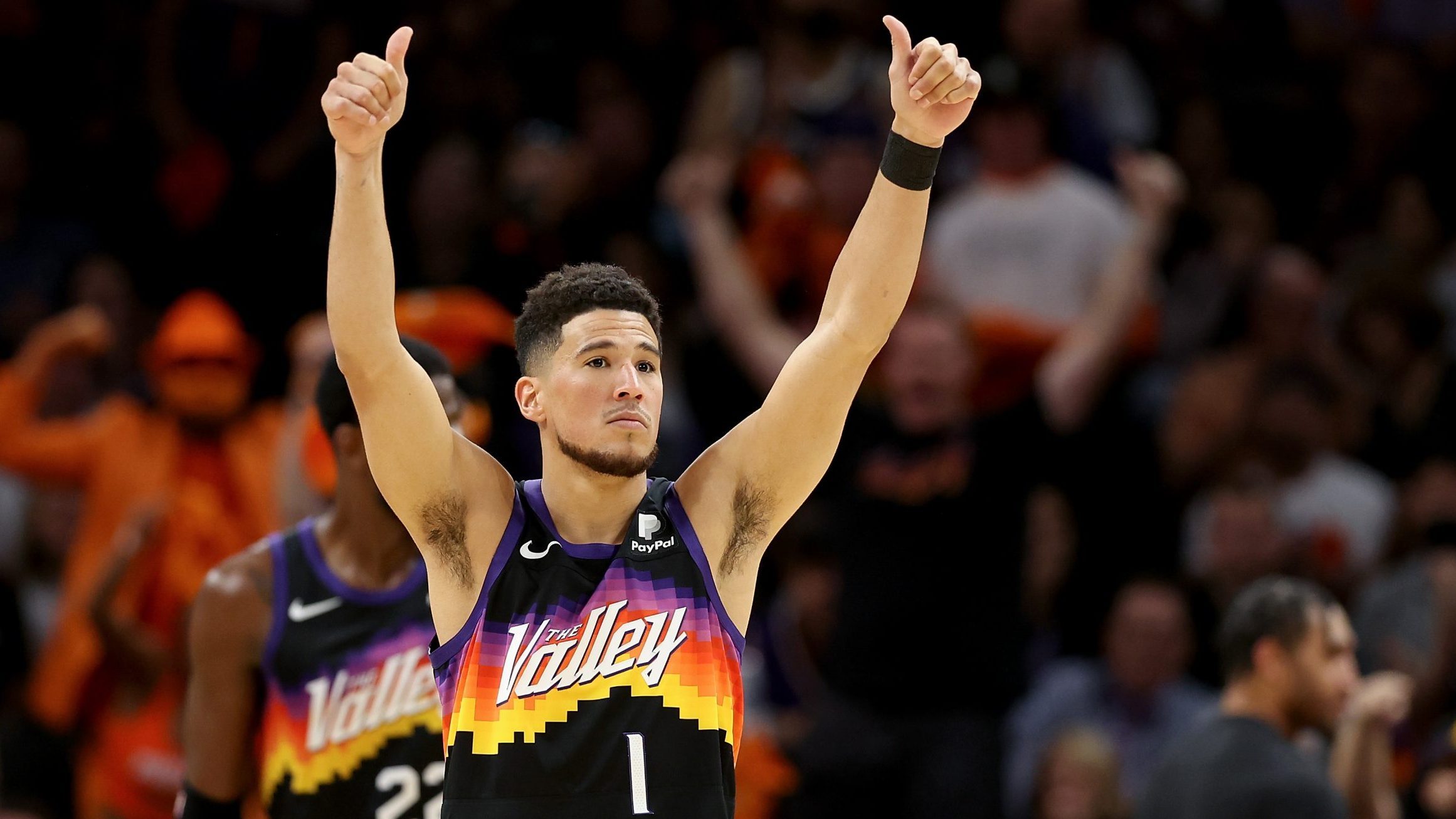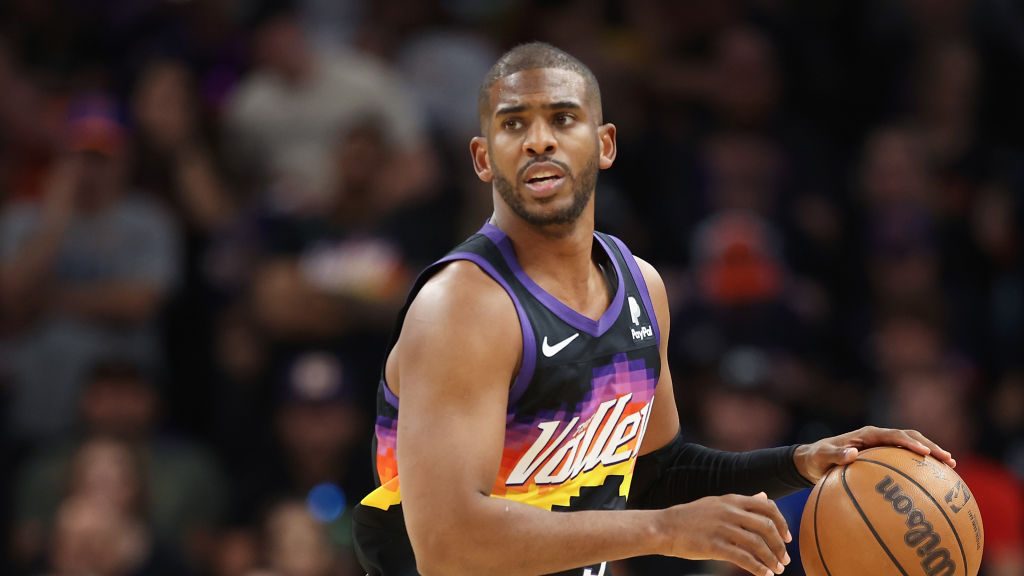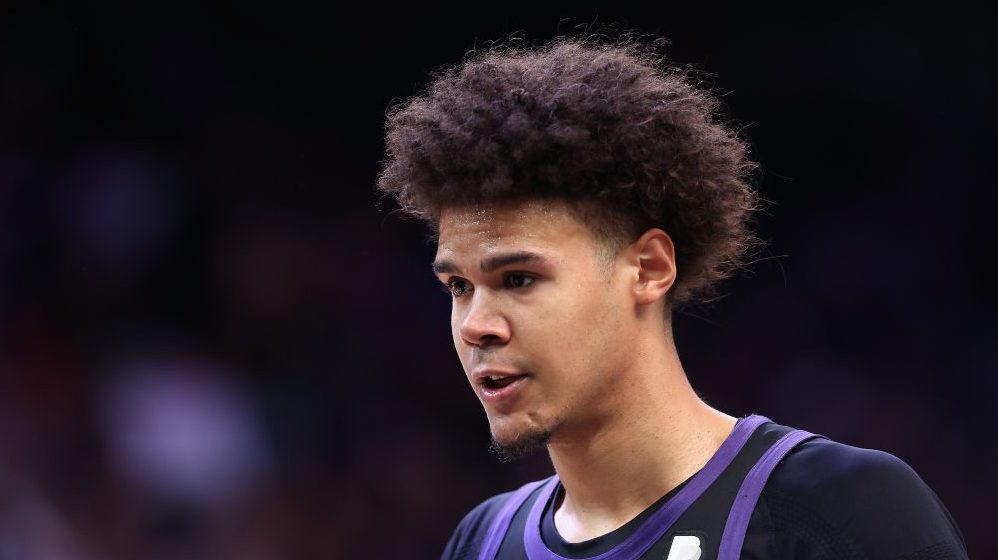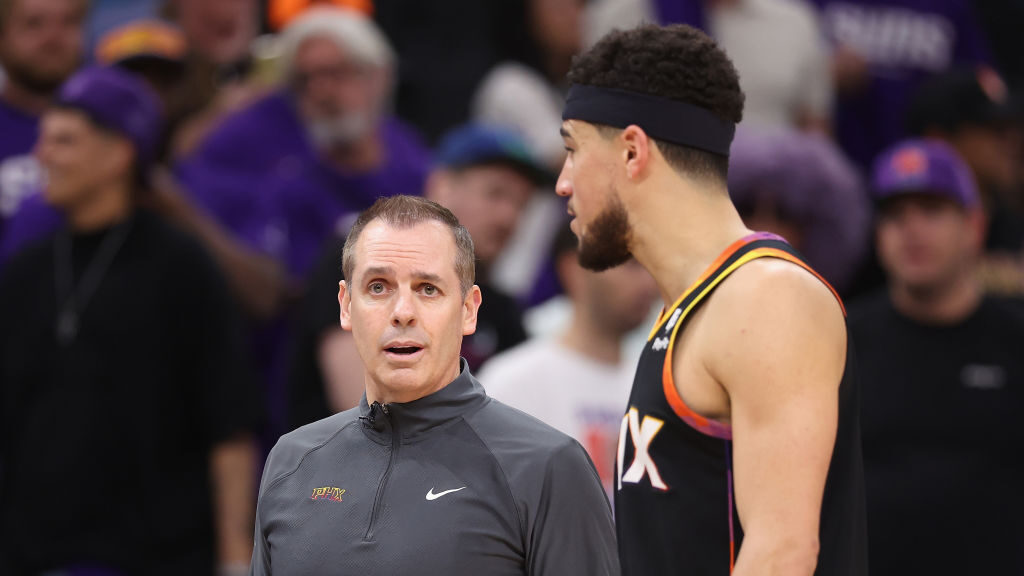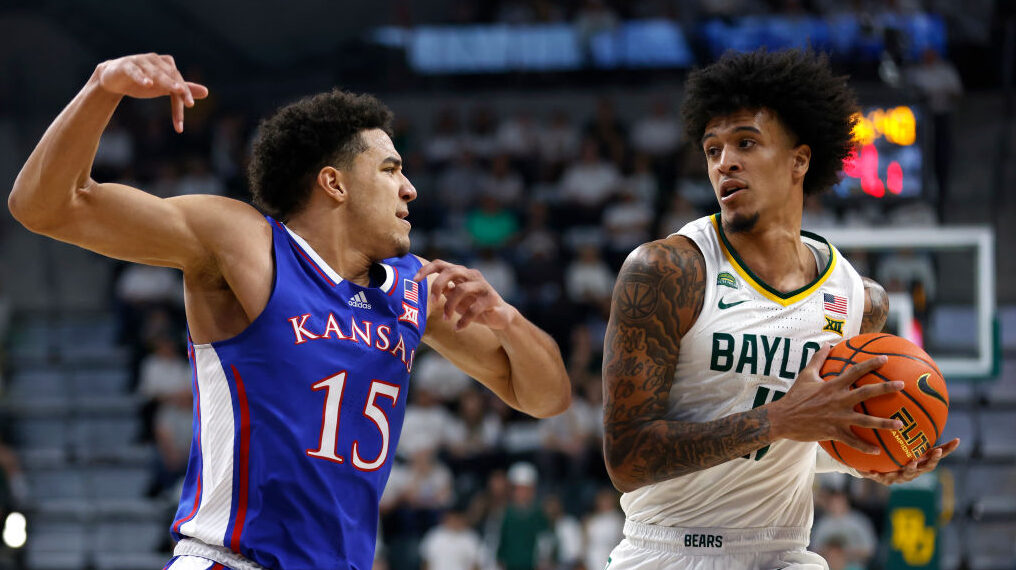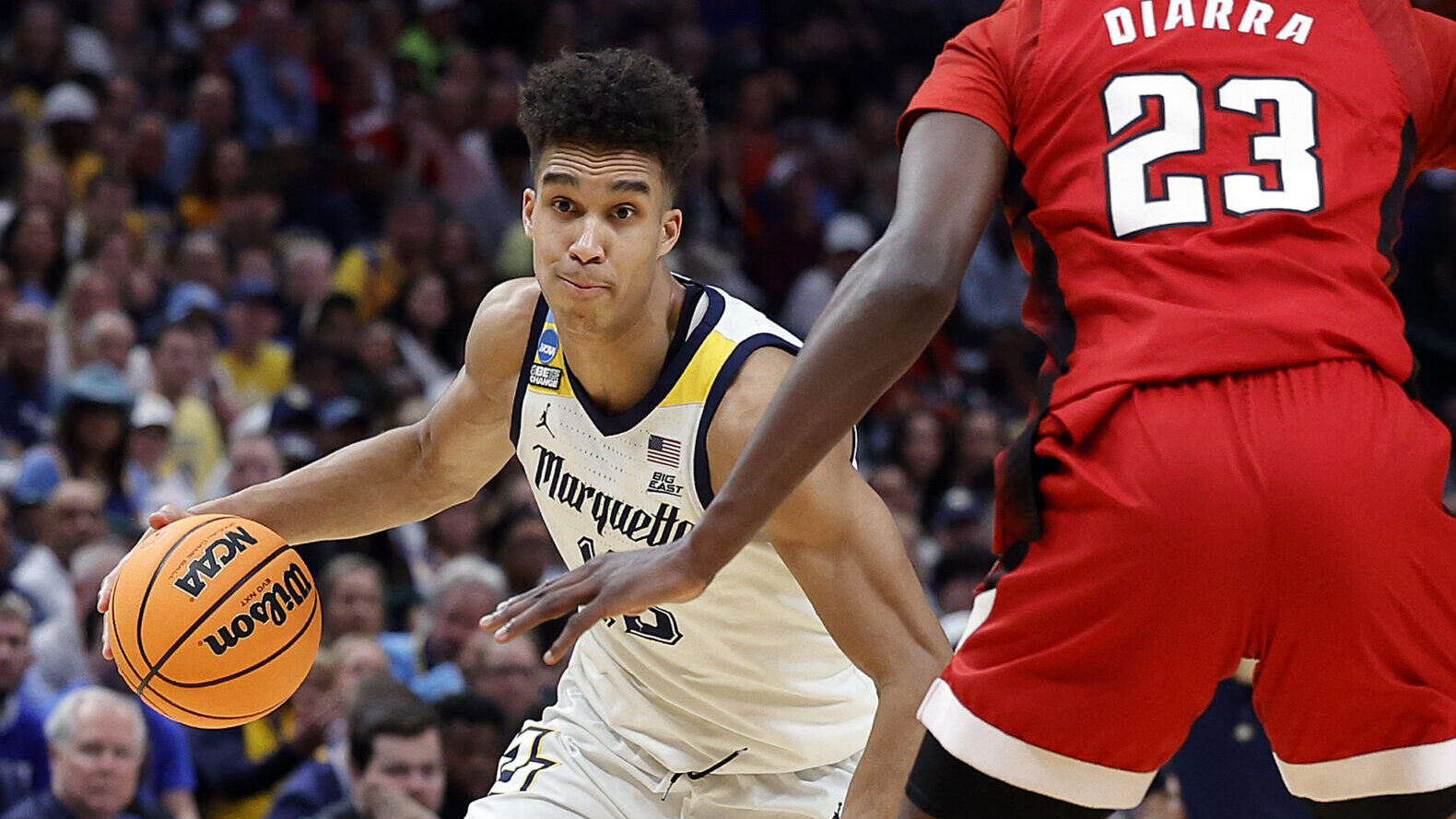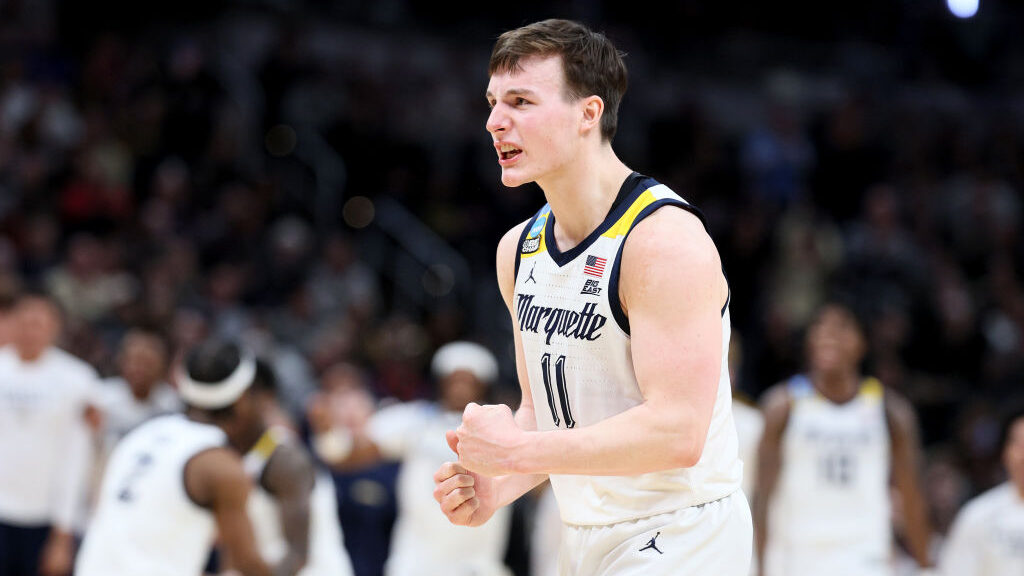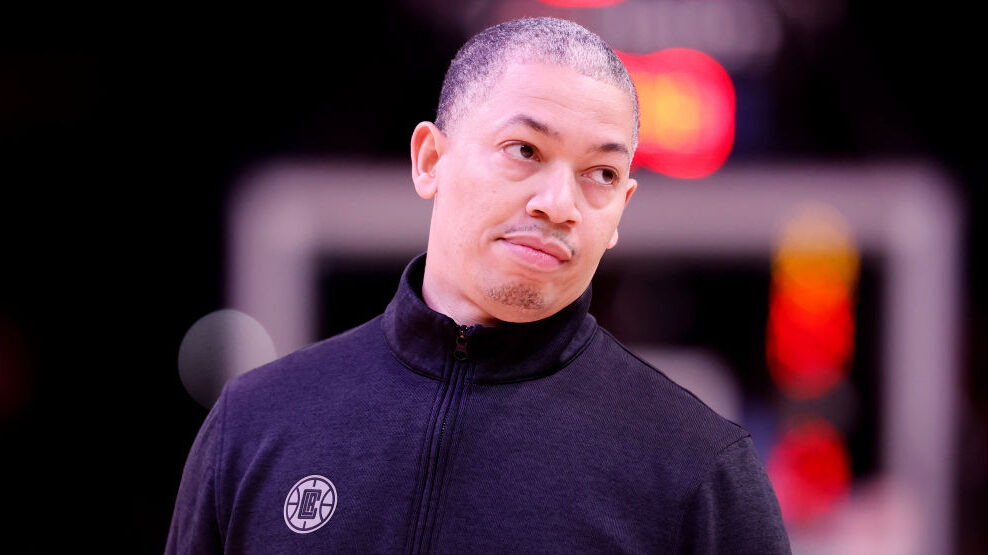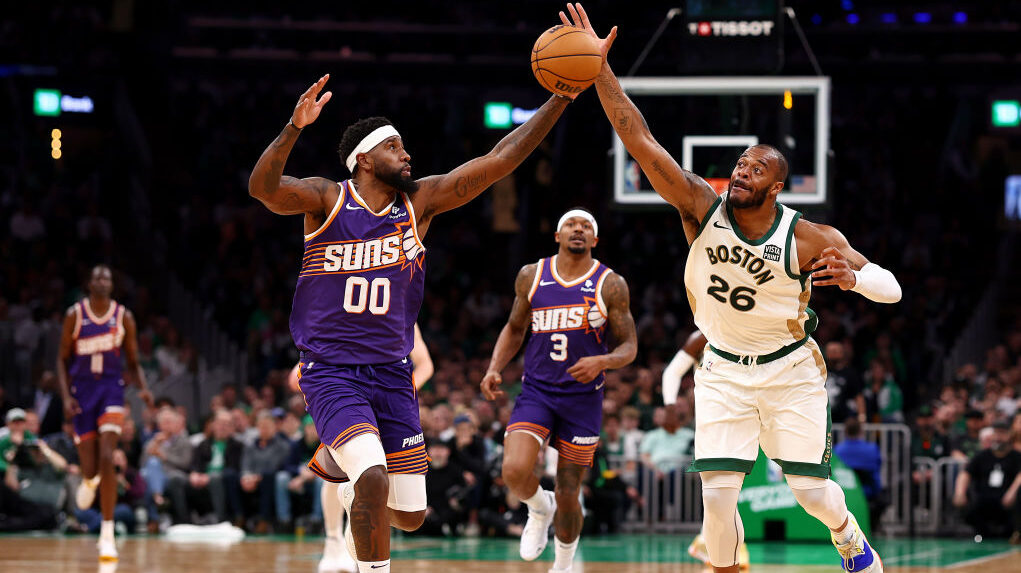Suns’ offseason questions: How Phoenix can remake role player ecology
May 20, 2022, 7:32 AM

Phoenix Suns forward Jae Crowder, center, pass the ball to teammate JaVale McGee (00) as he drives past Dallas Mavericks guard Luka Doncic (77) during the second half of Game 2 of an NBA basketball second-round playoff series, Wednesday, May 4, 2022, in Phoenix. (AP Photo/Matt York)
(AP Photo/Matt York)
After the Phoenix Suns’ shocking end to the season, Empire of the Suns will roll through a number of questions the team has to answer this offseason.
Following closer looks into Deandre Ayton, Devin Booker, Chris Paul and Cam Johnson, it’s time to dive into how the team can retool its role players.
Devin Booker remains the face of the franchise and should get a supermax contract extension this offseason after he likely ends up making his first All-NBA nod. Unlike last year, however, the team cannot ring-chase in 2022-23 by running it back after two opposing coaches found ways to hack away at Phoenix’s flaws — and that’s regardless of Deandre Ayton’s contract situation.
The Suns more than anything need upgrades in terms of ball-handling, and that was even true before Chris Paul turned 37 years old during the Western Conference semifinals loss to the Dallas Mavericks. Getting more athletic and shifting to a more wing-heavy rotation also wouldn’t hurt.
Let’s dive into a few key points about the role players under contract, those who are free agents and the financial concerns that come with retooling around a core of Booker, Paul, Mikal Bridges and potentially Ayton.
Which vets become trade chips?
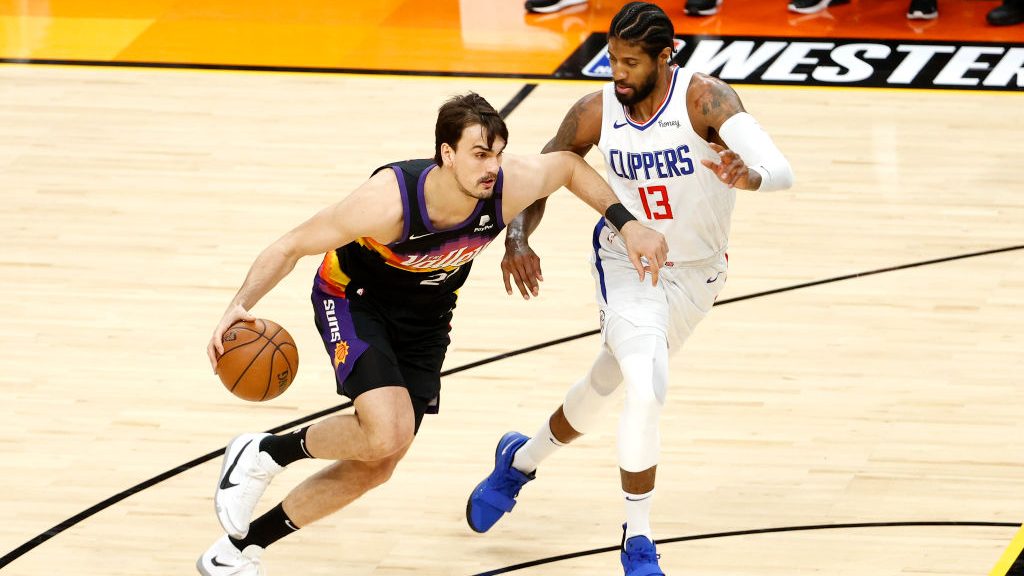 (Photo by Christian Petersen/Getty Images)
(Photo by Christian Petersen/Getty Images)
Tough decisions in James Jones’ front office start with two beloved veterans who enter next season on expiring deals.
Jae Crowder ($10.2 million) and Dario Saric ($9.2 million) are significant parts of the Suns’ turnaround the past two years. They’re smart and create the fabric of a team built around Booker, Paul and Ayton.
Hey, look at that: Crowder and Saric led the Suns in net rating and respectively were in the top-10 NBA-wide for this regular season and last.
Context is important in using that statistic, of course. They’re role players. But the context is they were vital pieces to the team. Trading them to free up cap space — without expecting more than late draft picks or younger role players in return — obviously risks blowing up continuity.
Crowder gave the Suns an edge. While his 9.4 points per game, 40% shooting and 35% 3-point accuracy don’t scream “untouchable,” his defense doesn’t get enough credit for giving Phoenix a boost, even in the team’s iffy playoff run this season. Then again, the 31-year-old was the weak spot on offense in the Dallas series, as the Mavs essentially allowed him to take open shots as they threw bodies at the Suns’ other starters.
Trading him would be a big shakeup, but it’s easy to imagine an extended Cam Johnson sliding into a starting spot.
Saric’s ACL tear in the 2022 NBA Finals and recent surgery on his meniscus will further limit an already underwhelming athlete, but there’s a reason the now-28-year-old was the key piece to a change-of-pace bench unit a season back. Arguably, the Suns doubling down on playing with a true center this season was part of their failure to recognize what made the Finals team so great.
But Phoenix could deal Saric’s salary and do their annual re-signing of Frank Kaminsky to get that floor-spacing, ball-moving center back on the team at a better price point.
Crowder and Saric aren’t the only vets returning who could be trade chips, for salary purposes at least.
Landry Shamet ($9.5 million), Cam Payne ($6.5 million) and Torrey Craig ($5.1 million) all had underwhelming seasons for different reasons, and only Craig is on an expiring deal.
Shamet’s defense was a pleasant surprise, but his scoring pace hasn’t improved since his rookie season — it’s exactly the same at 8.3 points in 21 minutes per game — and his efficiency was about 4% worse from the field and from three.
Payne has two more years under contract, but despite his struggles, he brings the needed ball-handling for Phoenix to deal him for anyone that’s not a top-five backup point guard. Averaging 10.8 points and 4.9 assists wasn’t bad, though he could stand to get that three-point shooting well above 34%.
All that said, the Suns must consider including any of the above in trades. Maintaining a playoff squad is getting expensive, and it’ll only be worse by retaining Ayton and/or extending Johnson.
Free-agent departures seem likely
2022 free agents: C JaVale McGee, C Bismack Biyombo, F Ish Wainright, PG Aaron Holiday, PG Elfrid Payton
Phoenix’s plan to keep size on the court backfired two playoff series in a row. For sure, it didn’t help the Suns didn’t have enough quick-trigger shooters around the bigs to enhance their rim-rollers on the offensive end. On defense, it was a nightmare for them chasing undersized centers off the three-point line.
That would suddenly put Biyombo in a stronger position of returning than McGee, and considering the finances, that case becomes even stronger. If McGee comes back on a minimum deal after putting up 9.2 points and 6.7 rebounds with a block in just 16 minutes per game, have at it.
Out of all the players listed above, Wainright looks all but poised to return, especially if the Suns go with the NBA flow by sticking him at power forward and center so he can play a P.J. Tucker-like role. Worst case, he’s the last player on the roster who has a year of experience in the system.
In the backcourt, Payton’s style never found its place, while Holiday’s shooting, energy and decent initiation skills looked like they did until he was cast out of the rotation.
Without draft picks, value is hard to come by
When considering all of the Suns’ role players we’ve touched on, the concerns don’t stay with their collective skillsets.
The majority of those players did not contribute enough ball-handling, shooting or defensive versatility considering the money.
Rookies could. Problem is, Jones’ front office has flopped in using the draft after having a nice debut to acquire Saric and draft Johnson in Jones’ first year on the job.
Phoenix does not have a draft pick this summer and traded their late-first-rounder in 2021 away to pay Shamet. Brooklyn is paying the rookie it took with the Suns’ pick, Day’Ron Sharpe, $10.2 million over four years, while Shamet is making $10.3 million next year alone. That’s not great value.
The Suns passed on sticking at 29. Not only that, they didn’t wait around to find out who was available with the pick. Notable rotation players in Herb Jones (New Orleans Pelicans), Ayo Dosunmu (Chicago Bulls) and Jeremiah Robinson-Earl (Oklahoma City Thunder) all fell and were available if the Suns had stuck around in the draft.
The first two of those guys played on playoff teams and easily could have brought something extra to this Phoenix team as rookies. Imagine a Bridges/Jones/Booker group of defenders on the wings! Or Dosunmu creating an open look for Booker on one end and hounding All-Star point guards on the other!
Even if we say the Suns drafted a player who was not playoff-ready, there would have been immense value in someone learning the system and improving enough to push for a rotation spot in 2022-23. I digress.
If the Suns keep their core together, utilizing the draft to find value and build bench depth is a necessity that can’t be overlooked like it was last year, when the team ran it back with continuity in mind.
Any of the aforementioned trades of key veterans could be replaced by finding younger, cheaper players, which will help sustain the bench. At the least, acquiring picks would give Phoenix a little more trade capital that it currently does not have in the pantry.

